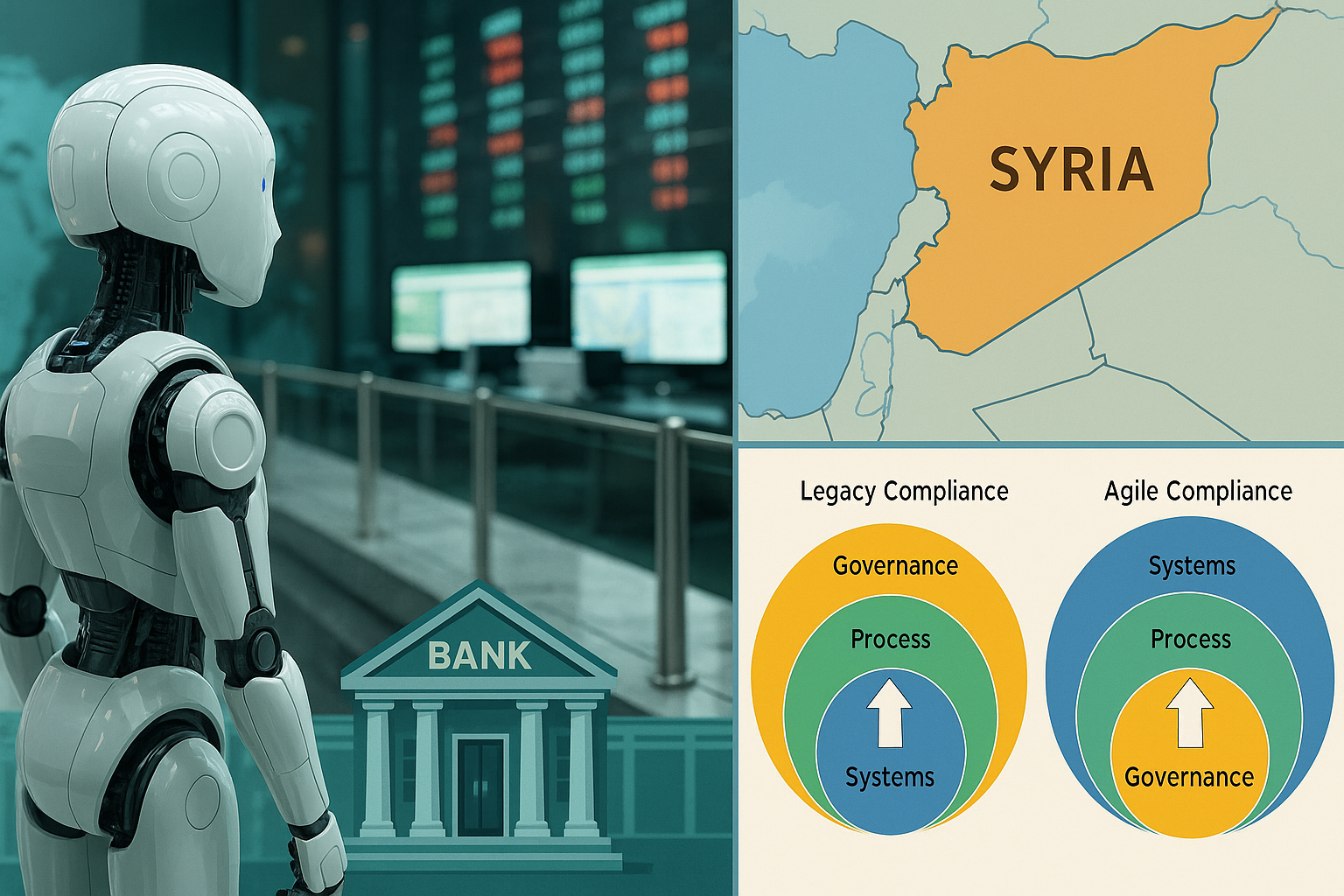Community banks need to be strategic and tactical about innovation. Innovation should be driven by corporate strategy. It should be carried out as part of a tactical plan to address business goals.
But in practice, where on earth are we going to start? What are our priorities? The business strategy should be able to answer this question in theory. But we’re not sure what problems we can throw technology at. We don't know which ones need capital, where we need organizational change, and so on.
For most people, "innovation” means technology. So let’s focus on that, with perhaps some risk management and operations thrown in.
Five major innovation priorities
Every bank is different of course. But there are some common themes that I hear over and over again as I talk to community bankers. Here are my top five:
1. Net interest margins are continuing to narrow. Cost of funds can’t go any lower but competition is squeezing yields on every kind of loan. So although loans and interest income are growing, net income isn’t keeping pace. Interest rate increases would help community banks, but this is outside our control. If we’re to maintain or grow net income, we have to reduce expense (again!) or profitably grow non-interest revenues. Or, preferably, both.
2. Customers are demanding more and more. True, small business owners are less demanding than those pesky millennial consumers. But businesses now expect that we will do more than give them loans and allow them to manage their deposit accounts. They want cash management capabilities and cross-border services. They are looking for supply chain finance. Some want investment management and all sorts of other things that used to be the domain of the big banks.
3. Core banking vendors hold community banks hostage. OK that’s a bit of an overstatement, but doesn’t it feel that way sometimes? After all, who decides what software we should run? And that in turn decides what product features we can offer?
4. Regulators demand more and more. From capital controls to AML monitoring to lending disclosures, it just gets harder and more expensive.
5. Cyber-security is a growing concern. It seems like a never-ending race between security geeks and criminal hackers. Can we ever be satisfied that our cyber-security plans are adequate?
This is a pretty good list to start with. It offers a number of ways we can better use technology, and operational capabilities in order to innovate. This may include new technologies, or at least new technology partners. It may even include new servicing partners. Or it may be reassessing how we use what we already have.
Note: I did not include in this list of priorities experimentation with new technologies. Blockchain is going to be very important. But it isn’t your job to figure out how. Artificial intelligence will most certainly have a part to play in your future. But it is a means to an end, not an end in itself.
Some community banks will experiment with new technologies: there is nothing wrong with that. But we should not confuse this with strategic innovation. Its goal is to use available technology and services to address urgent business imperatives.
Let’s take a closer look at each of these priorities, and see how innovation might be brought to bear on them. In subsequent posts, I’ll dig into these more deeply.
Countering the effects of squeezed net interest margins
There are three basic ways to address revenue reduction from lower interest margins.
1. Lend more. This is the path most banks are taking today. But there are several ways to increase the loan portfolio.
- Make marketing more aggressive and/or lower underwriting standards. This makes regulators queasy for good reason!
- Offer loans to new potential borrowers. This may mean marketing in new geographic areas, or through new channels. An example would be partnering with an alternative lender interested in booking loans on the bank’s books rather than their own.
- Offer new loan types to existing borrowers. One option would be supply chain finance (e.g. receivables financing or factoring). Some FinTech providers offer an easy way into supply chain financing.
2. Reduce lending costs or improve credit quality. This is a good area for FinTech – solutions exist in several areas of underwriting, servicing and collections.
3. Increase Non-Interest Income. Most community banks focus on lending almost to the exclusion of fee-based revenue streams. Non-Interest Income as a percentage of total revenue tends to be in the 10-20% range for community banks. For larger banks it is more like 30-50%. This makes community banks very vulnerable to the current unfavorable interest rate environment. Areas that are becoming easier for community banks to offer include:
- Cash management: for example payables management, receivables management, domestic and cross-border payments origination, check fraud (positive pay), cash concentration and investment sweeps
- Risk management: such as providing access to FX and interest rate swaps and other hedges
- Wealth management: e.g. advisory, trust services, investment management
These may be completely new business areas for a bank. If so they involve far more than just some technology. Risk and compliance, operations, and servicing considerations can all be quite complex. The right ways for increasing Non-Interest Income will vary for each bank. This will depend on experience, capabilities and customer base. But it is becoming increasingly vital for banks to explore new sources.
Meeting Growing Customer Demands
Consumers are demanding greater convenience, functionality and responsiveness from their banks. So also are the businesses they run. Most community banks have online and mobile capabilities. But they are often quite limited functionally. So customers are turning to larger banks and non-traditional channels for some of their banking needs.
One of the largest areas of FinTech focus has been on customer-facing apps. As the more mature apps develop, they are becoming easier to integrate into existing mobile and online products. They warrant exploration. Each bank knows its own customer base and should be able to identify some key priorities for retaining customers. You may also see potential for differentiating themselves enough to gain new customers.
Working with Core Banking Vendors
This is a tough area, particularly for banks with older systems. Core banking systems tend to be very closed in nature. Vendors have little incentive to help their customers with integration of new technology capabilities. As a result, it can be difficult to use technology to enable differentiation.
This is changing, albeit slowly. The vendors will still want to keep control of their customer base. But they are starting to embrace innovation through partnerships with FinTech.
Bank innovation does not require replacement of the core banking system. There are companies setting out to create open and flexible core systems (such as Mambu and the even more ambitious VaultOS). But they have a long way to go before community banks will be able to replace existing vendors. Fortunately, most innovation doesn’t involve changes to the basic functions of banking.
The most important thing is to engage in dialogue with your core banking vendor. This may be either directly or through your system integrator. They may already have new capabilities that meet your requirements. If not, though, they may be interested in partnering with FinTech companies that provide what you’re looking for. They may also welcome you making the introduction.
Meeting Ever-Growing Regulatory Demands
The cost of regulation as a percentage of total operating cost is growing for everyone, but even more so for smaller community banks. This is one of the most promising areas for innovation. A couple of examples:
1. AML has imposed a huge burden on banks of all sizes. Particularly challenges arise in onboarding new customers because of CIP and KYC requirements. But ongoing due diligence and monitoring costs have also burgeoned. The need for AML monitoring models to be very conservative results in a large operational overhead as compliance staff work through large volumes of false positives. Many new technology companies are addressing these issues. Typically these solutions are easily integrated or even more or less standalone.
2. Regulatory exams are extremely expensive, particularly in the absence of well-structured compliance processes. Several FinTech companies are developing frameworks for compliance design and implementation. These improve the consistency of compliance across the organization and greatly increase regulator confidence.
3. Regulatory reporting burdens, including complex capital adequacy reporting, can also be relieved. Several technology providers offer improved data management, data analysis, business intelligence and reporting capabilities.
4. Look for FinTech (or RegTech) to respond quickly to complex new regulations. For example, we are already starting to see solutions to FASB’s rules for Current Expected Credit Losses (CECL).
Addressing Cyber-Security Concerns
Protecting customer transactions and private data is of the highest priority for banks. This is driven by concern about reputational risk from data breaches, potential for fraud losses, sanctions from the CFPB, and simply doing the right thing. Then, despite a bank’s best efforts, incidents are still going to occur. It is also critically important to plan for incident response. This can minimize damage and ensure transparent communication.
The problem is that this is a complex area. Most community banks cannot afford to have a dedicated information security team. Even a small team may lack the breadth and depth necessary to address all Cyber-Security risks. In this case, innovation may be more about choosing the right partners than using the right technology.
Conclusion
All the major areas of concern require innovative solutions. Innovation may involve new technologies, old technologies used in a new way, organization change, or the selection of specialist partners. The most important thing is to drive innovation strategically. You must choose priority areas of focus, and then clearly define the business problem to be solved.
In future posts, I will delve deeper into some of these priority areas, since we’ve only scratched the surface here. I’ll also discuss some specific solution-selection approaches. These will include technology scans, innovation challenges, and FinTech immersion programs.

 Community banks
Community banks 

